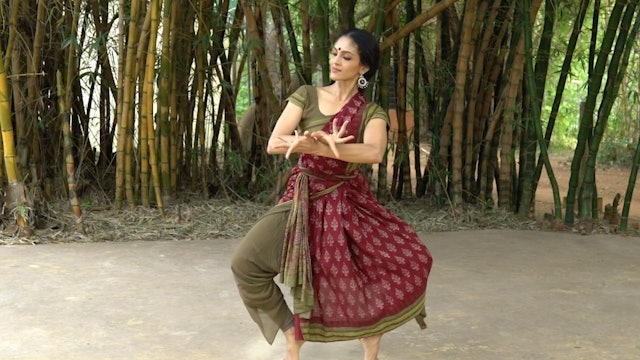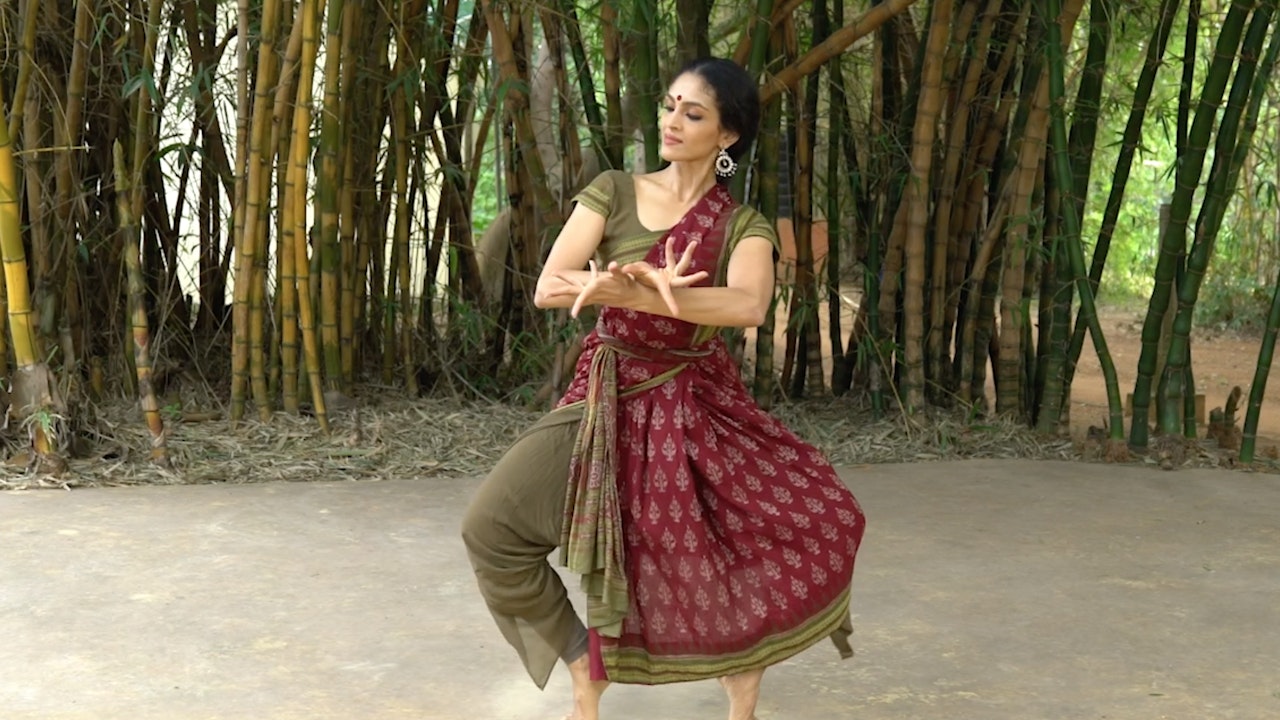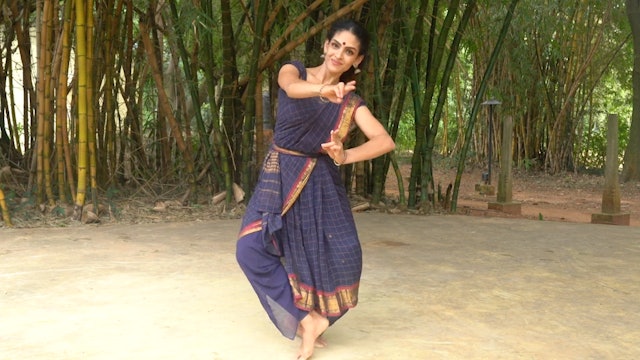Adavus: Practice videos
2 Seasons
We recommend that the student watches the instructions for the Aduvus, before commencing the practice of each Adavu set for at least a period of 5 to 6 months.
Please practice only the 1st and second speed to begin with and add the third speed as you go along. To get the maximum benefit from the Adavu section, it must be practiced alongside the flexibility and strength sections. You must also do one of the warm-ups before commencing on Adavus.
Tips:
- Practice clear alignment first.
- Clarity of movement is more important than speed.
- Don't hesitate to pause and repeat if you have not been able to internalise the corrections and guidelines offered in the Instruction videos.
- It is better to do even just one Adavu with complete clarity than muddle through the whole set.
-
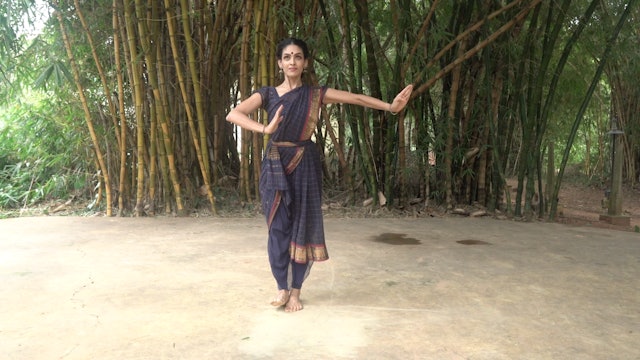 02:45Episode 1
02:45Episode 1Jaar Adavu/ Sarikal Adavu 1
Episode 1
'Jaaru', literally means, to slide. This is also called the Sarikal Adavu. In the RK Method, we refer to the standing series that end in Samapada as the Jaar Adavu series and the other sliding Adavus that use Muzhumandi, and Aalidam as Sarikal adavus for simplicity.
This Adavu incorporates the s...
-
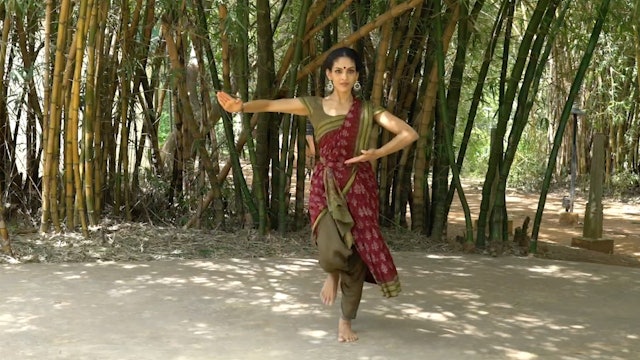 02:45Episode 1
02:45Episode 1Jaar Adavu/ Sarikal Adavu 2
Episode 1
'Jaaru', literally means, to slide. This is also called the Sarikal Adavu. In the RK Method, we refer to the standing series that end in Samapada as the Jaar Adavu series and the other sliding Adavus that use Muzhumandi, and Aalidam as Sarikal adavus for simplicity.
This Adavu incorporates the ...
-
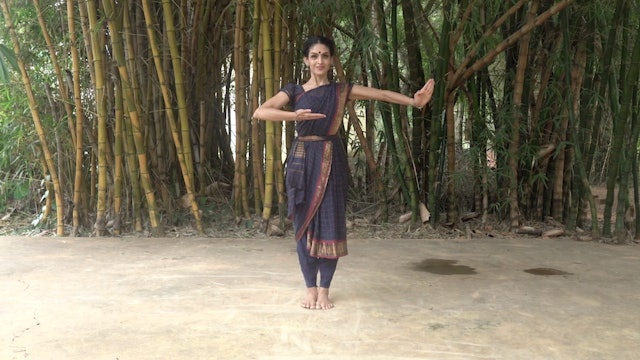 02:45Episode 3
02:45Episode 3Jaar Adavu/ Sarikal Adavu 3
Episode 3
'Jaaru', literally means, to slide. This is also called the Sarikal Adavu. In the RK Method, we refer to the standing series that end in Samapada as the Jaar Adavu series and the other sliding Adavus that use Muzhumandi, and Aalidam as Sarikal adavus for simplicity.
This Adavu incorporates the s...
-
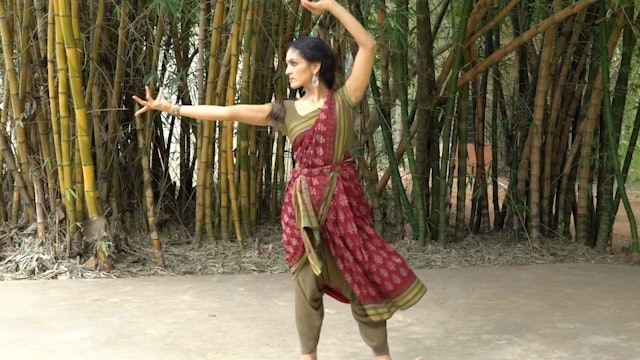 01:33Episode 4
01:33Episode 4Bramari Adavu
Episode 4
Bramari literally means to turn. The first Bramari adavu is introduced in the second set of Adavus, the other varieties will be introduced subsequently. It is important to keep the eyes focussed at a particular point and turn the head faster than the body.
Things to keep in mind:
- When stretc... -
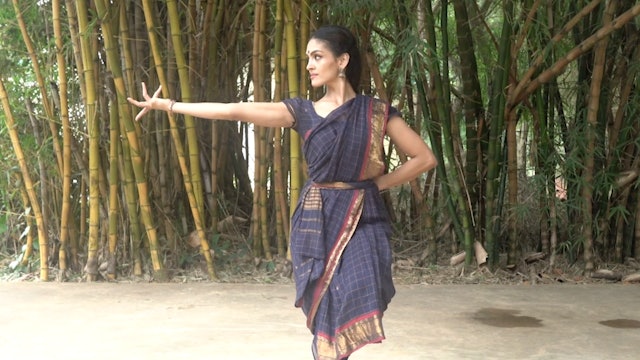 01:12Episode 5
01:12Episode 5Bramari Adavu 2
Episode 5
Bramari literally means to turn. The second Bramari adavu that we practise in the Raadha Kalpa method introduces, quarter, half and full turns.
These turns are used in choreography to change direction with precision.
Things to keep in mind:
- The lengthening of the bent knee and the turn happ... -
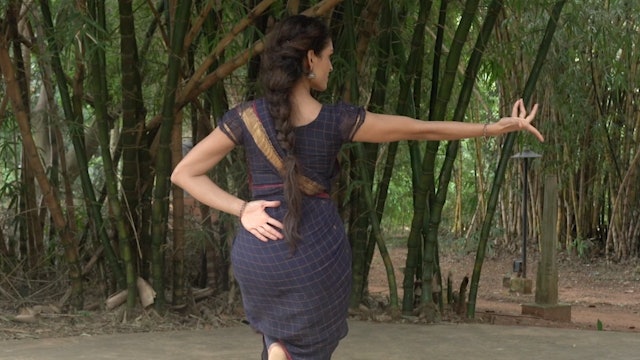 02:36Episode 6
02:36Episode 6Bramari Adavu 3
Episode 6
Bramari literally means to turn. The third Bramari adavu that we practise in the Raadha Kalpa method introduces half turns while using the same technique as the previous Bramari.
These turns are used in choreography to change direction with precision.
Things to keep in mind:
- The lengthening o... -
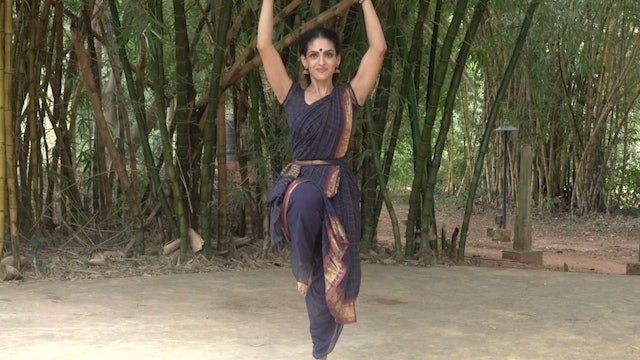 02:34Episode 7
02:34Episode 7Bramari Adavu 4
Episode 7
Bramari literally means to turn. The fourth Bramari adavu that we practise in the Raadha Kalpa method introduces full turns while using the same technique as the third Bramari adavu.
The arm movement is varied in this turn just so students can practise a different combination of upper an lower ...
-
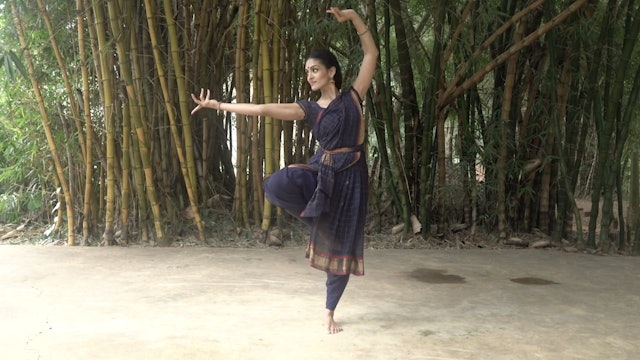 00:42Episode 23
00:42Episode 23Bramari Adavu 5
Episode 23
Bramari literally means to turn. The fifth Bramari adavu that we practise in the Raadha Kalpa method introduces full turns while changing the technique of the turn.
The arm movement is like the first Bramari Adavu, and the leg movement incorporates a swivel.
This Adavu is usually not done in v...
-
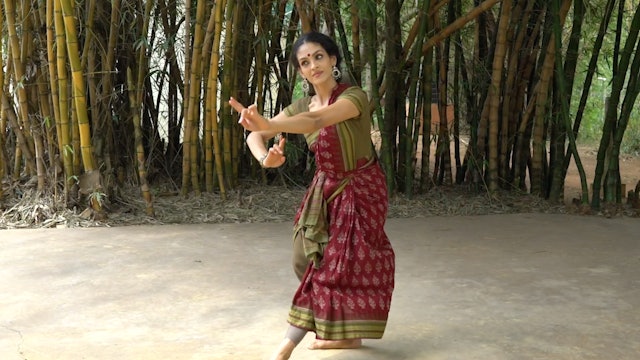 01:12Episode 8
01:12Episode 8Kartharee Adavu 1
Episode 8
The Kartharee adavu is a movement that begins with a jump, followed by the crossing of the legs. The name could come from the hasta that is used or from the fact that the legs cross.
The bends of the bodies vary in the various types of Kartharee adavu. We usually practice this Adavu to a three ...
-
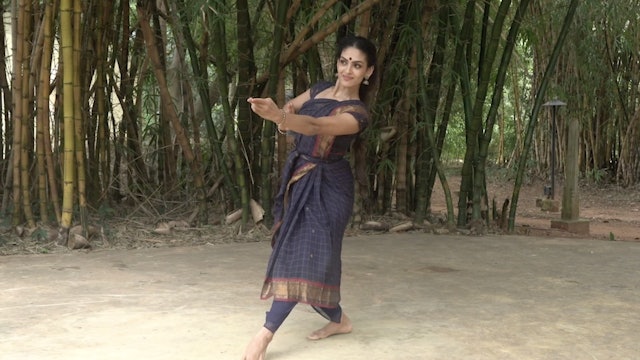 01:12Episode 9
01:12Episode 9Kartharee Adavu 2
Episode 9
The Kartharee adavu is a movement that begins with a jump, followed by the crossing of the legs. The name could come from the hasta that is used or from the fact that the legs cross.
The bends of the bodies vary in the various types of Kartharee adavu. We usually practice this Adavu to a three c...
-
Kartharee Adavu 3
The Kartharee adavu is a movement that begins with a jump, followed by the crossing of the legs. The name could come from the hasta that is used or from the fact that the legs cross.
The bends of the bodies vary in the various types of Kartharee adavu. We usually practice this Adavu to a three c...
-
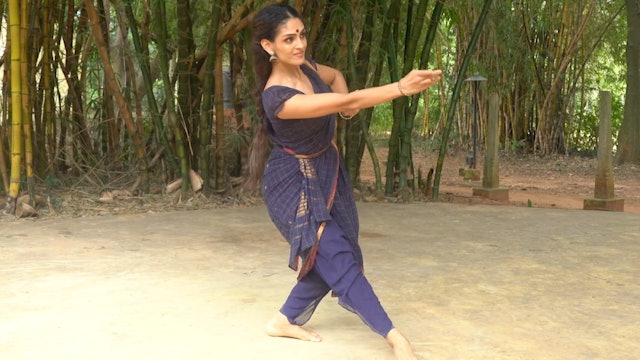 01:54Episode 11
01:54Episode 11Kartharee Adavu 4
Episode 11
The Kartharee adavu is a movement that begins with a jump, followed by the crossing of the legs. The name could come from the hasta that is used or from the fact that the legs cross.
The Last kartharee adavu uses a big jump to land with the legs crossed.
The arms move in a complete mandala, cir...
-
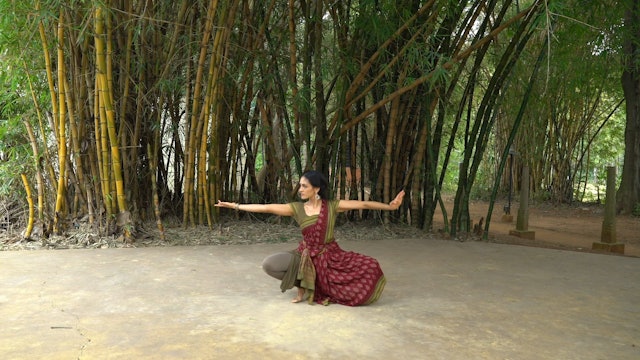 01:09Episode 12
01:09Episode 12Mandi 1st speed
Episode 12
The Mandi Adavu gets it's name from the movement that involves the knee being placed on the ground alternately.
It is very important to do the exercises that strengthen the legs substantially and do all the exercises for Araimandi for a long period of time before embarking on this Adavu.
Boun...
-
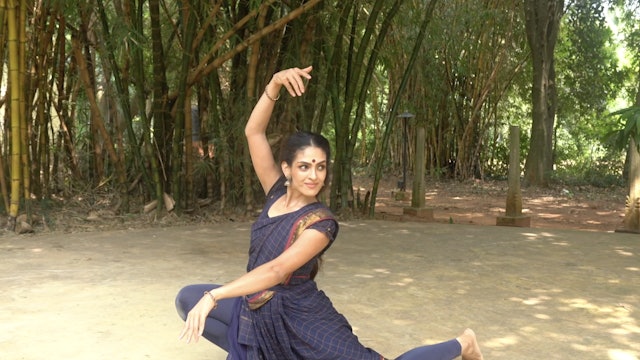 00:57Episode 26
00:57Episode 26Mandi Adavu Variations
Episode 26
The Mandi adavu is named such because there is a small jump on the balls of the feet after which the knee is placed on the ground.
Things to remember:
- stay lifted as much as possible without sitting on the heels
- keep pushing the thighs back and the heels forward to keep your muscles engaged... -
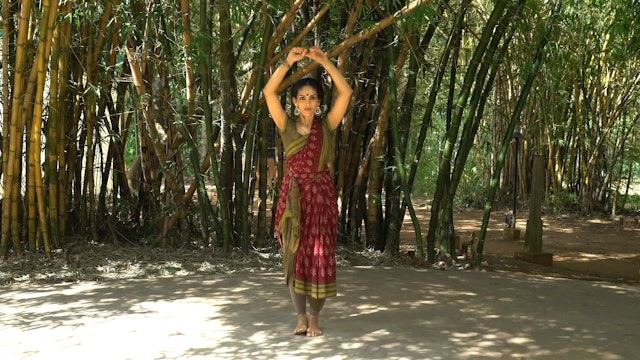 02:07Episode 13
02:07Episode 13Korwe Adavu 1
Episode 13
The Korwe adavu is a combination of previously introduced foot and body articulations. It is called a Korvey adavu as it cannot be placed into any specific category. It has a Tattu, naatu, Bramari, Serikal amongst other movements. Some Korwe adavus also use a Kudittam in the feet.
Things to kee...
-
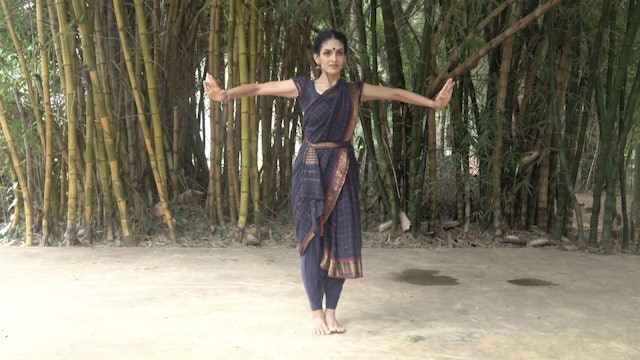 02:09Episode 14
02:09Episode 14Korwe Adavu 2
Episode 14
The Korwe adavu is a combination of previously introduced foot and body articulations. It is called a Korvey adavu as it cannot be placed into any specific category. It has a Tattu, naatu, Bramari, Serikal amongst other movements. Some Korwe adavus also use a Kudittam in the feet.
Things to keep...
-
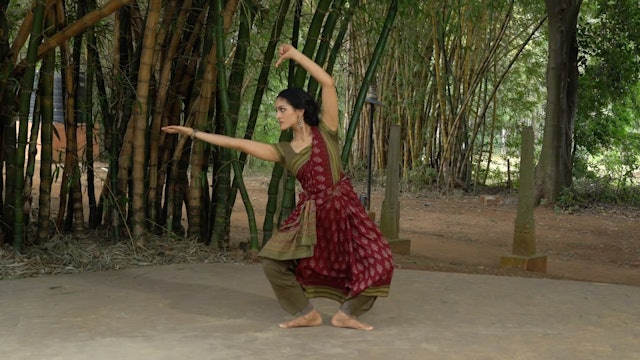 02:07Episode 15
02:07Episode 15Korwe Adavu (utplavana 1 )
Episode 15
The Korwe adavu is a combination of previously introduced foot and body articulations. It is called a Korvey adavu as it cannot be placed into any specific category. It has a Tattu, naatu, Bramari, Serikal amongst other movements. Some Korwe adavus also use a Kudittam in the feet.
Things to kee...
-
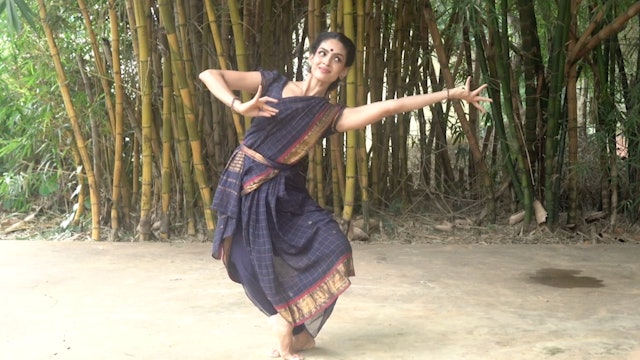 02:09Episode 16
02:09Episode 16Korwe Adavu (utplavana 2 )
Episode 16
The Korwe adavu is a combination of previously introduced foot and body articulations. It is called a Korvey adavu as it cannot be placed into any specific category. It has a Tattu, naatu, Bramari, Serikal amongst other movements. Some Korwe adavus also use a Kudittam in the feet.
Things to keep...
-
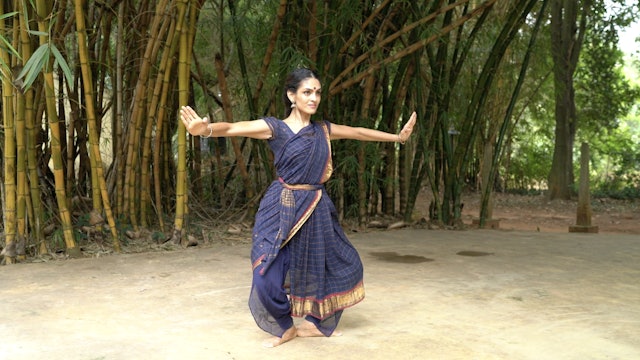 02:09Episode 24
02:09Episode 24Korwe Adavu (utplavana 3 )
Episode 24
The Korwe adavu is a combination of previously introduced foot and body articulations. It is called a Korvey adavu as it cannot be placed into any specific category. It has a Tattu, naatu, Bramari, Serikal amongst other movements. Some Korwe adavus also use a Kudittam in the feet.
Things to keep...
-
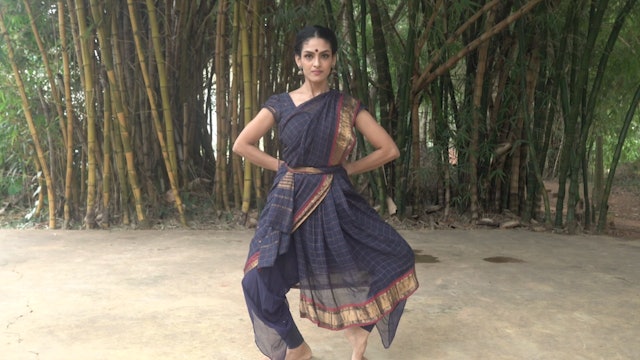 01:05Episode 18
01:05Episode 18Thattu Mettadavu 1 : Tishram
Episode 18
This Adavu has two components, a tapping action with one foot that comprises of the Thattu, and the Udgattitham action on the other leg with a heel. Sometimes both the tap and the Udgattitam can happen on the same foot, depending on the Jathi.
Pointers:
- Try to make sure the heel is lifted pro... -
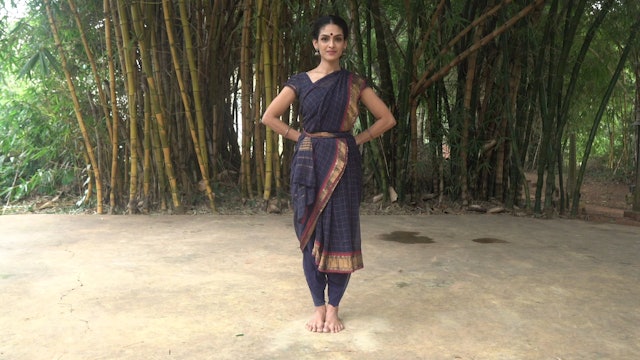 01:31Episode 19
01:31Episode 19Thattu Mettadavu 2 : Chatushram
Episode 19
This Adavu has two components, a tapping action with one foot that comprises of the Thattu, and the Udgattitham action on the other leg with a heel. Sometimes both the tap and the Udgattitam can happen on the same foot, depending on the Jathi.
Pointers:
- Try to make sure the heel is lifted pro... -
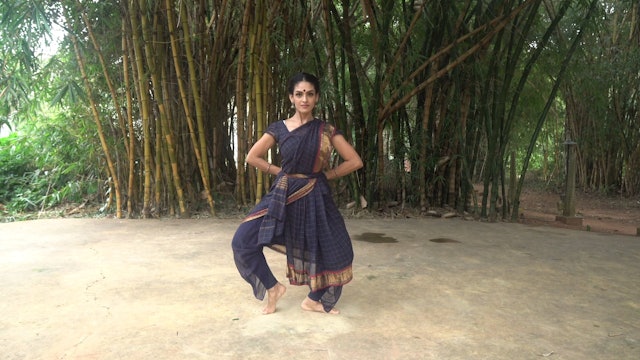 01:54Episode 20
01:54Episode 20Thattu Mettadavu 3 : Khandam
Episode 20
This Adavu has two components, a tapping action with one foot that comprises of the Thattu, and the Udgattitham action on the other leg with a heel. Sometimes both the tap and the Udgattitam can happen on the same foot, depending on the Jathi.
Pointers:
- Try to make sure the heel is lifted prop... -
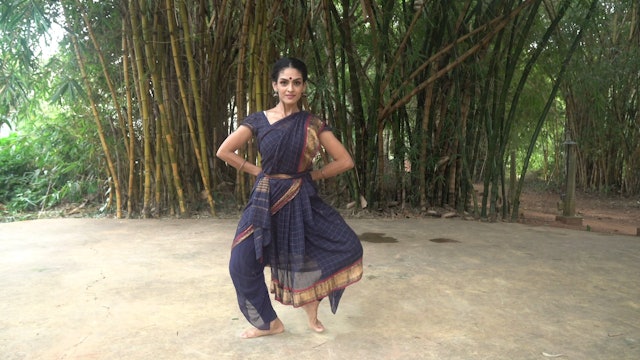 02:36Episode 21
02:36Episode 21Thattu Mettadavu 4 : Mishram
Episode 21
This Adavu has two components, a tapping action with one foot that comprises of the Thattu, and the Udgattitham action on the other leg with a heel. Sometimes both the tap and the Udgattitam can happen on the same foot, depending on the Jathi.
Pointers:
- Try to make sure the heel is lifted prop... -
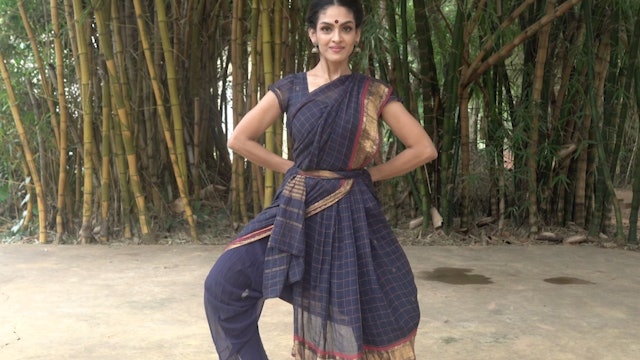 03:18Episode 22
03:18Episode 22Thattu Mettadavu 5 : Sankeernam
Episode 22
This Adavu has two components, a tapping action with one foot that comprises of the Thattu, and the Udgattitham action on the other leg with a heel. Sometimes both the tap and the Udgattitam can happen on the same foot, depending on the Jathi.
Pointers:
- Try to make sure the heel is lifted prop...
